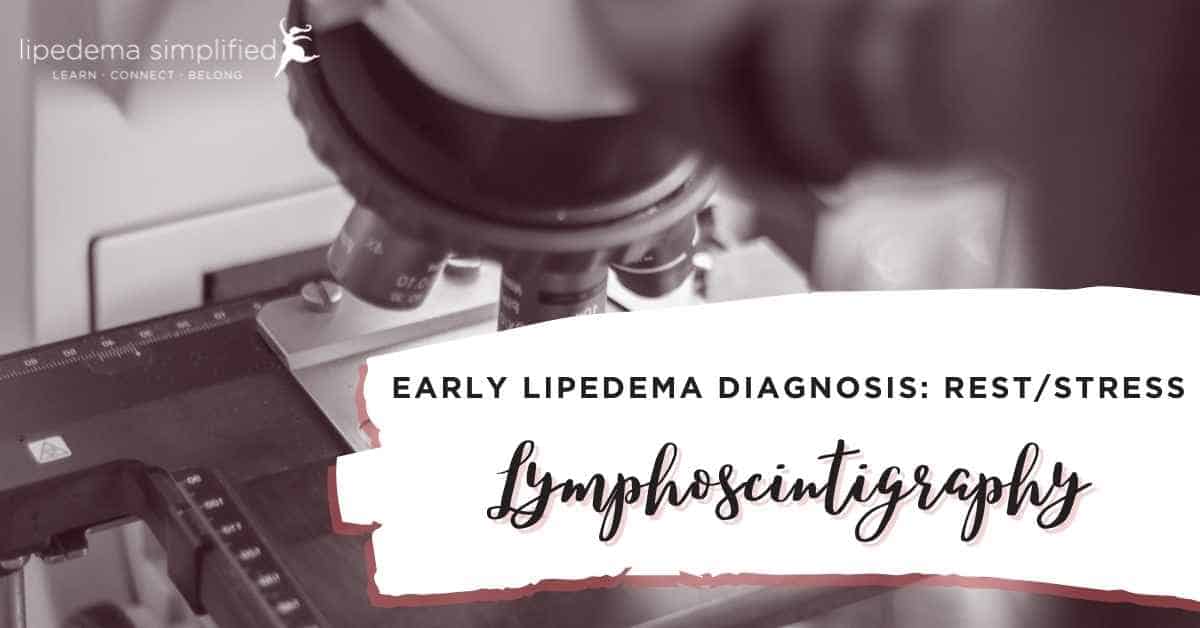
An interesting study was performed by a group of surgeons in Italy that was published in the peer-reviewed journal World Journal of Nuclear Medicine in 2020. It’s entitled, Rest/stress intradermal lymphoscintigraphy in diagnosis of lipedema. The lead author is Dr. Tartaglione. They propose using rest/stress lymphoscintigraphy to diagnose lipedema in its early stages and to evaluate lymphatic functioning in the later stages of lipedema.
Who were the participants?
Let’s take a look at the participants who were enrolled in this study.
54 women diagnosed with lipedema participated in this study. Their age range was 17-86 years and the average age was 47 years. The average BMI was 32, which would typically indicate obesity, but we know that BMI is not very accurate in the case of lipedema.
What were the methods?
Each woman underwent the following procedure in the study:
First, Lymphoscintigraphy was performed by injecting a tracer into each leg between the toes and at the outside ankle. Images were then taken while laying on their back, resting. What followed next was 2 minutes of stepping exercise, followed by more imaging. Then, the participants engaged in a walking exercise for 30-40 minutes with more imaging one hour later.
From the data, they were able to calculate the tracer appearance time, or how long in minutes it took for the tracer to appear in the nodes at the groin, and a numeric transport index that should fall in a range of 0-10. Higher numbers outside of this range indicate a more severe lymphatic impairment.
What were the notable results?
While the resting scans showed normal transport of lymph in only a third of the participants, 92.5% had normal flow after the short burst of exercise for 2 minutes. It was also interesting that normal flow was achieved despite the presence of lymph vessels described as “tortuous” instead of streamlined in 75% of the participants.
The authors report that in their clinical experience, only 10 to 15% of patients with lymphedema show this normal lymph transport. They suggest this may be useful to differentiate between lipedema and lymphedema in women with early-stage lipedema.
They did not report on the lymphatic flow after the longer exercise, but the paper does show age, BMI, and transport index for each leg for all the participants. The average transport index was within range at 9, but several participants showed lymphatic impairment with numbers as high as 16. The authors report that this was correlated with later stages of lipedema, but the lipedema stage of each participant was not reported in the data table, so this correlation is not visible to the reader.
I did not perform any calculations with their data myself, but a cursory glance at the data table seems to point to no correlation between age, BMI, and transport index. For instance, while one participant was elderly at 81 years old, obese with a BMI of 37, and an excellent transport index of 3 in each leg, another participant had a poor transport index of 13 in each leg with a BMI of 27 (overweight), and age 49. Although without the actual calculations performed, it is impossible to state what the average would be. These could simply be outlier values. So it was disappointing that the authors did not report on these possible relationships because it would have made this paper much more valuable to women with lipedema.
What are my takeaways?
The authors conclude that rest/stress lymphoscintigraphy may be a valuable tool for clinicians to identify early-stage lipedema and allow much earlier intervention than is generally available. Additionally, they believe that this imaging can diagnose lymphatic dysfunction in later-stage lipedema that may better guide treatment.
Overall, though, I wish there had been more data reported in the paper to allow the reader to see how the authors came to their conclusions.
For more related content, be sure to check out Lipedema Simplified’s Flash Briefings, our daily mini-podcast with tips, tools, helpful research, and other resources pertaining to lipedema.
~ Leslyn Keith, OTD, CLT-LANA
Board President, Director of Research | The Lipedema Project
